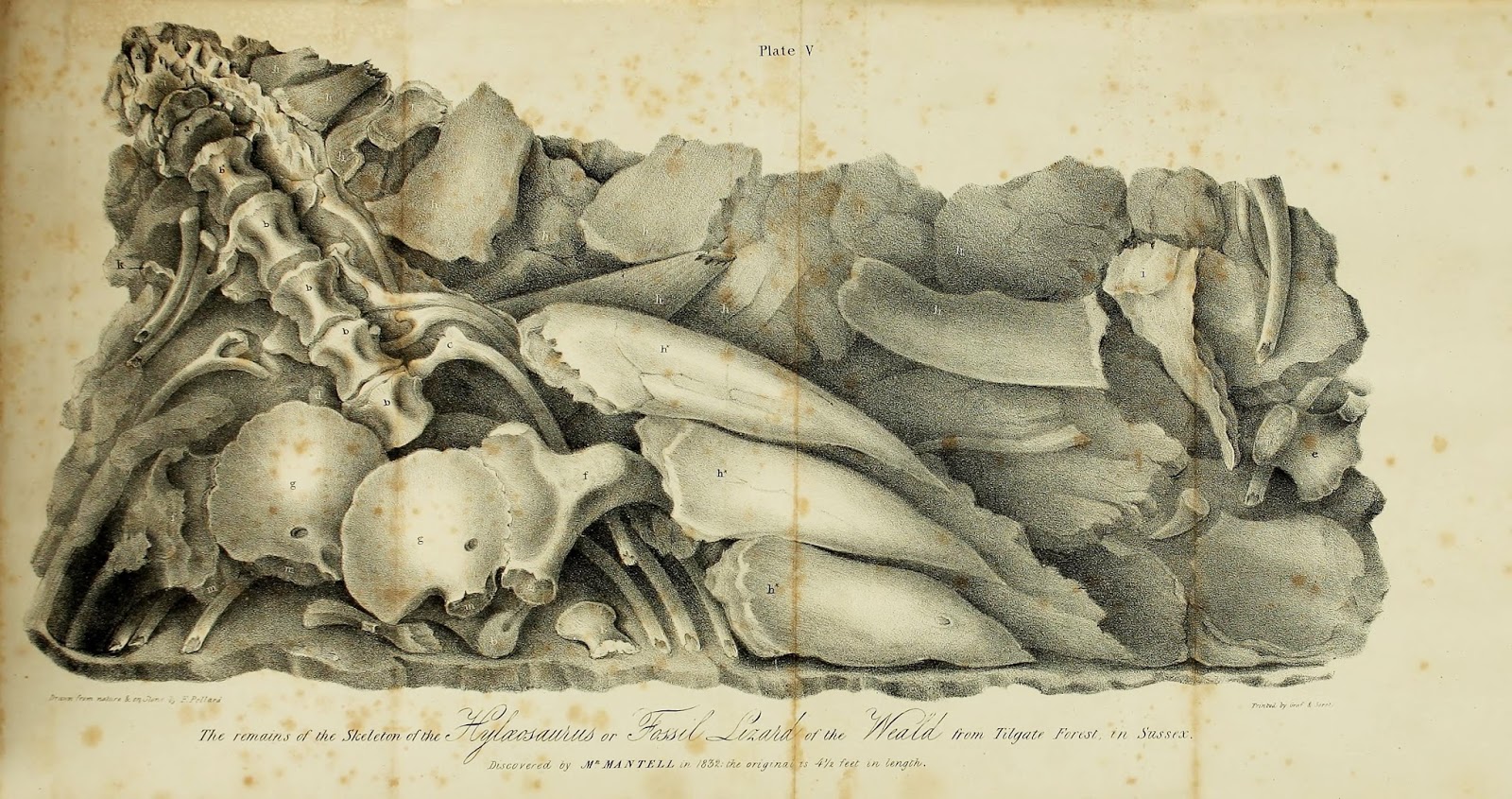Mantell and the Armored Dinosaurs
British geologist and paleontologist Gideon Mantell is famous for his contributions to the scientific discovery of dinosaurs. In 1825, he described and validly named the second dinosaur genus, Iguanodon. In 1833, he described another dinosaur, which was later used, along with Iguanodon and Megalosaurus, to define Dinosauria.
A gunpowder explosion at a quarry in Tilgate Forest, West Sussex, revealed a collection of about fifty fossil bone pieces that were acquired by Mantell in 1832. Mantell discovered that the pieces could be combined into a single, partially articulated skeleton, the most complete dinosaur skeleton known at the time. Mantell was at first inclined to attribute the fossils to his previously-named Iguanodon, but William Clift, the curator of the Royal College of Surgeons, doubted the identification, pointing out that several plates and spikes found amongst the fossils were likely body armor, thus indicating that this was a new species. Thus, Mantell decided to create a new genus for the specimen, naming it Hylaeosaurus.
 |
| Hylaeosaurus. Mantell, Gideon. The geology of the south-east of England. 1833. http://biodiversitylibrary.org/page/48441272. Digitized by: Natural History Museum, London. |
Mantell originally intended to publish the new name within a journal article, but was informed that the paper he had prepared was too long for publication. Rather than rewriting the paper, Mantell decided to publish a book on his fossil finds and include a chapter on Hylaeosaurus within it. Within three weeks, Mantell compiled his notes on his fossil finds together into a single manuscript. Furthermore, being warned by Sir Henry Thomas De la Beche, the first director of the Geological Survey of Great Britain, that new nomenclature conventions required that a full species name, rather than just a genus, were required for authorship recognition, Mantell gave his specimen the binomial Hylaeosaurus armatus. The description was published in 1833 within Mantell’s book The Geology of the South-East of England.
Hylaeosaurus was the first ankylosaur (which include the majority of armored dinosaurs) to be scientifically named. Though additional Hylaeosaurus species were named over the years, Hylaeosaurus armatus is currently considered the only valid species in the genus.
Fossil Stories
Stay tuned all week for more great fossil fun with our #FossilStories campaign, including:
- Tweets and Facebook Posts
- Blog Posts highlighting milestones and key publications in the history of fossil research
- A Flickr Collection with hundreds of historic fossil illustrations
- A Pinterest Collection featuring a selection of our favorite fossil illustrations
- A BHL Collection containing seminal publications in the history of paleontology
- A series of live webcasts at BHL partner institutions
- A citizen science challenge in collaboration with The Field Book Project, the Smithsonian Transcription Center, and Smithsonian Institution Archives





Leave a Comment